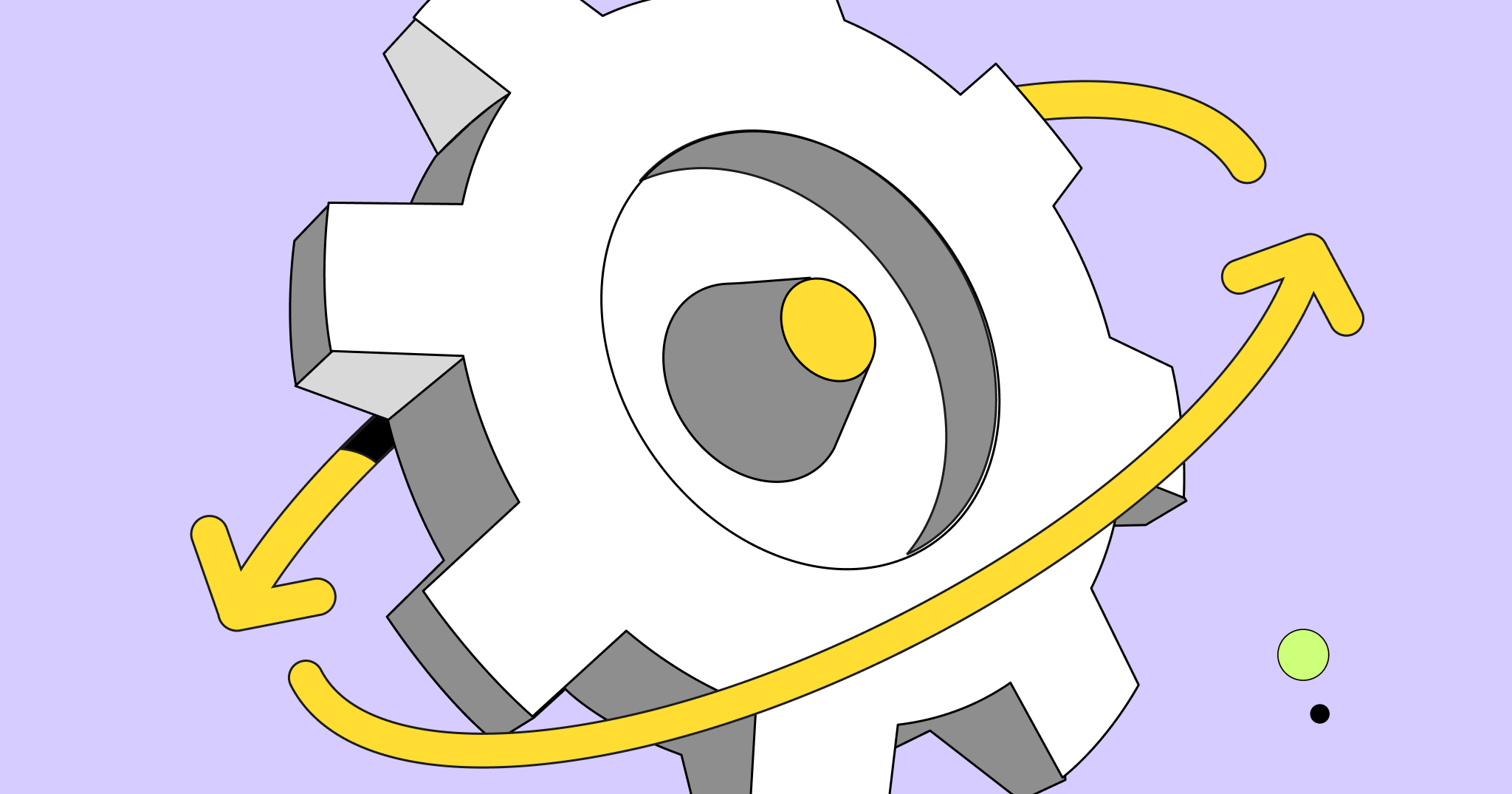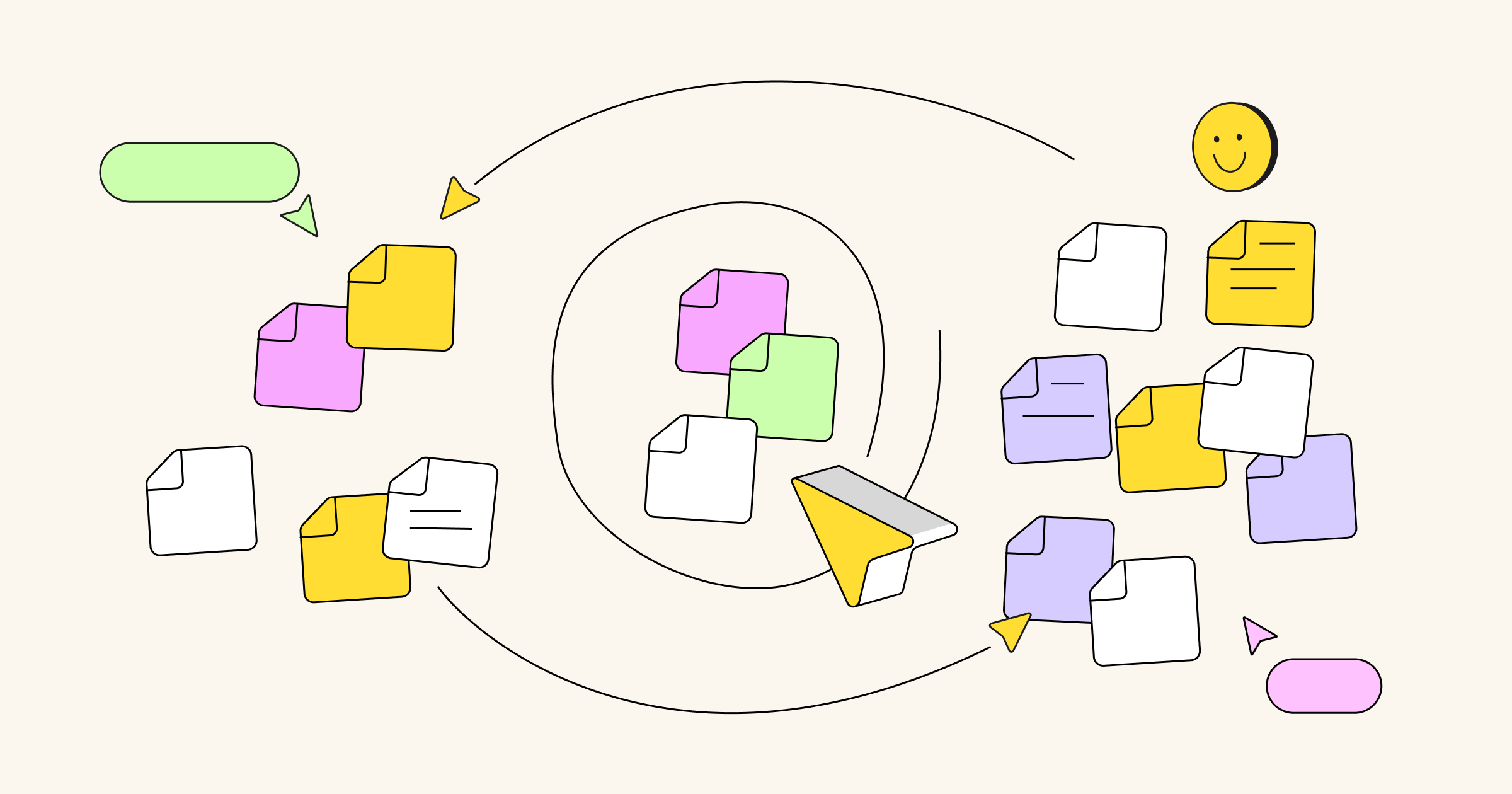In an ever-evolving marketplace, companies have to constantly innovate new products or update existing ones to satisfy customers. A stagnant product line can lead to customers choosing newer or better products from competitors.
Ideas drive innovation. But leaders have a tough time sorting through the hundreds of ideas from different concepts, teams, and products.
Categorizing and prioritizing these ideas can help teams focus on the innovations with the highest potential for success. An innovation matrix is a tool that helps via visualization and effective idea sorting.
This article delves into the basics of an innovation matrix and the four types of innovation. It also informs readers on how they can create an effective innovation system.
What is an innovation matrix?
An innovation matrix lets organizations manage and prioritize ideas via visualization tools. It enables companies of all sizes to collect ideas and decide which ones are worth pursuing, depending on company or team goals.

Rather than sift through multiple ideas collected across teams and products, leaders can use the matrix to identify innovations that help achieve a particular goal.
Companies can use the innovation matrix for product development and management. Teams can ideate new products and services or upgrades to an existing product.
For example, the innovation matrix can help a company decide if they need an entirely new app or if they can add or remove features to improve an existing one.
The matrix also helps create an innovation management system, which is a uniform process for teams to gather, analyze, and work on ideas.
Why do companies need an innovation matrix?
Whether it’s a start-up or an industry giant, the innovation matrix can be equally helpful in fostering creativity and generating new ideas. Here’s how:
Optimize idea generation
In the process of creating an innovation matrix, team members or inter-department collaborators can efficiently brainstorm ideas.
So they aren’t just collecting ideas and going through each one during lengthy discussions. Instead, they have a visual tool to help them speed up this process and make decisions quickly.
Improve idea management
When there are tens or even hundreds of ideas from different teams in the organization, how do leaders decide which one is worth pursuing? One quick way is to create a system that helps categorize ideas.
For example, using the four types of innovation, leaders can quickly assign a category to an idea and decide if that’s the type of innovation they’re currently looking for.
If yes, they can focus on delving deeper into the idea and collecting the resources needed for successful execution. Otherwise, they can store the idea for later or discard it entirely.
Prioritize ideas for better decision-making
What happens when categorizing isn’t enough? What if there are multiple ideas in the same category? How do you identify the best opportunities?
Prioritizing ideas is key to better innovation, and the matrix helps with this. Decision-makers can determine excellent ideas and start working on them while leaving the rest for later.
Targeted innovation
A targeted approach to innovation ensures your team is working on the best possible idea at a given time, intending to provide customers with an excellent experience.
You don’t want teams to work on an incremental app update when they could be working on adding features that improve customer experience.
With an innovation matrix, you can ensure your teams are focused on the top ideas and that you’re maximizing your internal resources.
The 4 types of innovation
There are several innovation strategies for product development, but one of the most common ones for innovation management is the “4 types of innovation” model.
In this model, each innovation or idea is classified as one of four categories.
1. Breakthrough Innovation
A breakthrough innovation, also called a radical or revolutionary innovation, is one that changes the entire industry. It’s when a company deploys a product that can completely replace existing technologies.
Examples include the invention of cloud-based software or a fully-online insurance platform with revolutionary pricing methods.
2. Sustaining Innovation
A sustaining innovation improves current products and adds new capabilities. This could include making the product easier to use or adding a new feature. This type of innovation is easier for companies to manage since they work within existing work processes and governance models.
3. Basic Research
An idea is classified as “Basic research” when there’s not enough research data to back it up. An innovation like this requires companies to invest in Research and Development (R&D) so that the data helps them innovate further in the future.
4. Disruptive Innovation
Disruptive innovation changes how an existing market works. In most cases, it leads to developing an alternative product that is more accessible to the general population than existing market leaders.
When your products or services are as efficient as their high-end alternatives, they will eventually replace the current market leaders atop the industry. Video streaming services and open-source software are examples of disruptive innovation.

These 4 types of innovations make up the four quadrants in an innovation matrix diagram. To decide where each idea goes, you first need to determine how well the problem that led to the innovation is defined (y-axis) and how well the domain is defined (x-axis).
For example, if the team has a detailed understanding of the problem, but the domain and required skills for this idea are unclear or need more research, then it is classified as a breakthrough innovation.
A disruptive innovation is the opposite. It’s one where the domain or market is well-defined, but the problem behind the idea requires further exploration.
How to create an innovation matrix
Now that you know how the innovation matrix works, it’s time to create your own and categorize your team’s ideas. A visual workspace like Miro is perfect for this. Your team can start by selecting Miro’s Innovation Matrix template and then follow these steps:
Step 1: Assemble a team from around the business who might be able to input into the problem definition and idea generation process. Encourage diverse representation to help spark the creative process.
Step 2: Ask attendees to list ideas on different sticky notes. You can use Miro’s stickies pack template alongside any other template to help you effectively record and sort information during brainstorming sessions. Each participant can be assigned their own pack, so it’s easy to track where ideas came from.
Step 3: Collaboratively sort ideas into the 4 quadrants that represent the different types of innovation. Place each sticky note in its respective quadrant.
Step 4: Differentiate sticky notes using varying colors.
Step 5: Encourage attendees to add relevant comments to each sticky note. This could include notes on why an idea was placed in a particular quadrant, feedback on existing ideas, and suggestions to move an idea to another quadrant.
Step 6: Edit your innovation matrix in real-time based on the feedback.
Step 7: Share the updated diagram with your team members and stakeholders with a single link.
7 steps to develop an innovation strategy
An innovation matrix is part of a comprehensive strategy that improves product development within an organization. You need an innovation strategy that encompasses goals, ideas, and execution methods. Here’s how you can build one:

#1. Determine the objective
Figure out the “why” of your innovation. What is the primary goal of your innovation strategy? How does it help achieve long-term business goals?
When you define the “why,” it’s easier to categorize and prioritize ideas. If the objective of your innovation initiative is to “create a ground-breaking project or a radical innovation,” then ideas related to incremental improvements to existing products can be shelved for later.
It also helps facilitate productive brainstorming sessions, where all participants are focused on developing the right type of ideas to match the objective, rather than yelling out random ideas and debating each one.
#2. Decide on a strategy
There are two main types of innovation strategies — new business model innovation and existing business model innovation.
New business model innovation aims to create new concepts that help develop the company’s revenue sources.
Essentially, teams try to develop a whole new product or service that is relevant to the target audience while giving the company a competitive advantage and increasing profitability.
A new business model innovation is focused on external factors, such as collaborations or new offerings.
Existing model innovations aim to improve core products or services rather than create new products. Sustainable and incremental innovations fall under this category.
An existing business model innovation strategy optimizes current products, pricing structures, or internal processes.

During team meetings, you can use online templates to quickly discuss and decide your innovation strategy.
#3. Get leadership involved
There’s no point in teams wasting hours on research and development, only for executives to shoot an innovation down when it’s first presented to them. It’s best to involve leaders from the get-go.
Talk to executives and team leads to help them understand and engage with the new innovation. Focus on:
- The current market and how your innovation can impact it.
- The implications of the innovation for the company.
- Scope of the innovation — whether it’s best to create new products or improve existing ones.
- Expected business outcomes.
- Resources required to facilitate this innovation.
- Any challenges.
A detailed product-focused discussion can help get shareholders on board and secure the necessary resources for implementation.
#4. Collect detailed customer information
Whether your innovation strategy is to build a whole new product or update existing ones, fulfilling customer needs is always a top priority.
You need a deep dive into your customer base to identify the target audience and what they want. Collect data regarding customer interests, frustrations, demographic details, buying habits, ambitions, usage statistics, etc.
Data collection can be done through website and social media forms, feedback surveys, giveaways, or contests. You can also ask your sales and customer support teams to pitch in with insights.

To collect data on how customers interact with your product, you can use a customer journey map. Using this template, you can segment your audience data by the stage of the buyer journey they are in.
Customer information is vital to developing buyer personas, which are fictional representations of users within each audience segment.
Detailed and segmented data gives you a better understanding of key customer pain points. You can then ideate products or features that can alleviate these concerns.
#5. Analyze your competitors
Understanding your customers is the first step to understanding the overall market that you’re competing in. You also need to look at competitors to see how they are innovating.
When looking at the overall market, it’s easier to identify gaps that your innovations can fill. A successful new product that addresses the gaps between two existing products can lead a company to the top of its industry and displace existing market leaders.
Competitor analysis is an excellent research tool, but innovation needs an individualistic approach. You can’t copy what others in the industry are doing and hope for the best. You need to personalize your entire product development process, from innovation to launch, to your target audience.
#6. Divide resources
Determine how much of the company’s current resources can be used for innovation initiatives.
For example, you may decide to split 60% of resources to core innovations (ideas that improve existing offerings), 30% to related ones (ideas that use existing offerings alongside new ones), and 10% to transformational innovations (completely new ones).
If there isn’t a satisfactory budget for effective radical innovations, it’s best to split the budget between core and incremental innovations instead.
Resources often change based on external factors and the state of the market.
For example, the pandemic deleted many companies’ innovation budgets and led them to focus solely on their primary offerings. Other companies used the chaotic market to innovate products that led them to success.
#7. Create an innovation management system
Organizations need a uniform innovation system where they can collect, store, and work on ideas. A collaborative online tool is the best for this.
Ideally, your software should allow you to organize different ideas in a workspace and allow real-time collaborative discussion and edits.
During brainstorming sessions, you need a collaborative whiteboard tool like Miro. The card sorting template, for example, lets you store ideas in different categories, take notes, add comments, and make updates.
Once the brainstorming is complete, use action plan templates to effectively determine the next steps required to move an idea from concept to development to launch.

To maximize this process, pick ideation software that integrates with your project management, communication, design, and other existing tools.
Creating an innovation management system helps everyone feel heard but ensures only the best ideas are pursued.
Boost your ideation approach with an innovation matrix
The innovation matrix is a valuable tool that fosters productive brainstorming and effective product development. When there’s a clear system to categorize ideas, you can easily decide which ones have the highest chance of success.
The innovation matrix guides teams to focus solely on promising innovations and see them through to completion. Miro’s visual workspace provides a digital workspace that supports effective idea generation and collaboration. Get started for free today.




